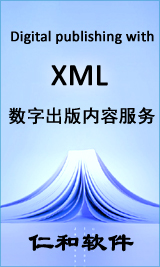ZHANG Xiangyi
,
ZHANG Jingwu and ZHENG Yangzeng(Department of Materials Engineering
,
Yanshan University
,
Qinhuangdao 066004
,
China)Mannscript received 4 September 1995
,
in revised form 8 April 1996
金属学报(英文版)
The nanocrystalline structure of annealed Fe73.5 Cu1 W3Si13.5B9 alloy has been investigated by using the XRD and the TEM methods. The relation between the initial permeability and the microstructure of the annealed alloy has been discussed. The crystalline phase in annealed Fe73.5 Cu1 W3Si13.5B9 alloy is the α-Fe(Si) phase with DO3 superstructure. The volume fraction, Si content and degree of order of the αFe(Si) phase increase with increasing annealing temperature. In the temperature range of 490-570℃, the α-Fe(Si) phase has a size of 13 nm, and its grain number increases as the annealing temperature is increased. The DO3 ordered region in the α-Fe(Si) grain is spherical approximately, and its size increases as the annealing temperature increases. The size of the DO3 ordered region is 12.8 nm at the temperature of 570℃,which is close to that of the α-Fe(Si) grain. There is obvious change in the structure of the residual amorphous phase during annealing, and the nearest atomic distance and the short-range order of residual amorphous phase reach maximum and minimum at 530℃, respectively. The initial permeability of annealed Fe73.5 Cu1 W3Si13.5 B9 alloy is not only dependent on the size, volume fraction and Si content of the α-Fe(Si) phase but also related to the structure state of the residual amorphous phase.
关键词:
: Fe_(73.5)Cu_1 W_3Si_(13.5)B_9 alloy
,
null
,
null
,
null
,
null
金属学报(英文版)
桑危郑牛樱裕桑牵粒裕桑希巍。希啤。龋伲模遥希牵牛巍。桑危模眨茫牛摹。模眨茫裕桑蹋拧。拢遥桑裕裕蹋拧。裕遥粒危樱桑裕桑希巍。桑巍。罚保罚怠。粒蹋眨停桑危眨汀。粒蹋蹋希?##2##3##4##5INVESTIGATIONOFHYDROGENINDUCEDDUCTILEBRITTLETRANSITIONIN7175ALUMINUMALLOY$R.G.Seng:B.JZhong,MG.ZengandP.Geng(DepartmentofMaterialsScierce,ScienceCollege,NorthearsternUniveisity,Shenyang110006,ChinaMaruscriptreceived4September1995inrevisedform20April1996)Abstrac:Effectsofhydrogenonthemechanicalpropertiesofdifferentlyaged7175aluminumalloyswereinvestigatedbyusingcathodicH-permeation,slowstrainratetensionandsoon.Theresultsindicatethatboththeyieldstressandthepercentagereductionofareadecreasewithincreasinghydrogenchargingtime,andthedegreeofreductiondecreasesasagingtimeincreasesforthesamehydrogenchargingtime.Keywords:hydrogeninducedductile-brittletransition,7175aluminumalloy,mechanicalproperty,cathodicH-permeation1.IntroductionForalongtimehydrogenembrittlementproblemwasthoughttobeabsentinhighstrengthaluminiumalloybecausethesolutiondegreeofhydrogeninaluminumatcommontemperatureandpressureisverysmall.However,hydrogenembrittlementphenomenonwasfoundinaluminumalloyduringtheinvestigationofstresscorrosionandcorrosionfatigue[1-5].Therehavebeenonlyafewreportsofhydrogeninducedsofteningandhardening.Inthispaper,theeffectsofhydrogenonmechanicalpropertiesof7175aluminumalloywereinvestigatedbyusingcathodicalchargingwithhydrogenandslowtensiontests.2.ExperimentalProcedureTheexperimentalmaterialwas7175aluminumalloyforgingintheformofa43mminthicknessandwithcomposition(wt%).5.41Zn,2.54Mg.1.49Cu,0.22Cr,0.1Mn.0.1Ti,0.16Fe.0.11Si,balancedbyA1.Alloyplateof1.5mminthicknesswasobtainedbyhot(465℃)andtoldrollingto83%reductioninthickness.Thelongaxisofhydrogenchargedspecimensisalongtherollingdirection.Allspecimensweresolidsolutionedat480℃for70min,followedtyimmediatequenchinginwaterandthenagedat140℃for6h(A),16h(B)and98h(C).Thetreatmentof6hiscorrespondingtotheunderagedstate.16hthefirstpeak-agedstateand98hthesecondpeak-agedstate.Thespecimenswerepolishedsuccessivelyusingemerypaperbeforehydrogencharging.Thetensilespecimenswerecathodicallychargedina2NH_2SO_4solutionwithasmallamountofAs_2O_3forpromotinghydrogenabsorption,andwithacurrentdensityof20±1mA/cm ̄2atroomtemperature.ThehydrogencontentanalysiswascarriedoutonanLT-1Amodelionmassmicroprobeafterthesputteringdepthreached8nm.Theioncurrentsofhydrogenandaluminuminvariousagedstateswererecordedunderthesamecondition.ThetensiletestswereperformedonanAG-10TAmodeltestmachinewhichwascontrolledbycomputer.3.ExperimentalResultsTheratioofioncurrentstrengthofhydrogentoaluminumisrelatedtohydrogenconcentrationinhydrogenchargedspecimen.TheresultswereshowninTable1Thehydrogencontentincreaseswiththeincreaseincharingtime.Ofthethreeagedstates,theunderagedspecimenhasthehighesthydrogencontent.Theratioofyieldstrengthofhydrogenchargedandunchargedspecimenschangeswithhydrogenchargingtime,asshowninFig.1Itcanbeseenthattheyieldstrengthofhydrogenchargedspecimendecreasewithincreasinghydrogenchargingtime.Atthesamechargingtime,theyieldstressdecreasestheleastinthesecondpeak-agedstate,anddecreasesthemostintheunderagedstate.Itindicatesthattheunderagedspecimenismostsensitivetohydrogeninducedsoftening,whichisconsistentwiththeresultsofanotherhighstrengthaluminumalloy[6].TherelativechangesoftheradioofreductionofareawithhydrogenchargingtimearesummarizedinFig.2,whereΨ ̄0andΨ ̄Harethepercentagereductionofareaofthesamplewithoutandwithhydrogenchargingrespectively.Theradioofreductionofareareduceswhenhydrogenchargingtimeincreases,andthedecreasingdegreeofreductionofareaincreaseswithincreasingagingtime,ie,,theunderagedstateisthemostsensitivetohydrogenembrittlement.4.DiscussionItisknownfromtheresultsabovethatcathodicalchargingwithhydrogenleadstotheobviousdecreaseinthetensilestrengthandplasticityThisisbecausealargeamountofsolidsolutionhydrogenentersthespecimenintheprocessofhydrogenchargingSolidsolutionhydrogenisliabletoenterthecentreofdislocationundertheactionofdislocationtrap,henceraisingthemovabilityofdislocation.Thereforethedislocationsinhydrogenchargedspecimenmoveeasierthaninunchargedspecimen.soresultinginthereductionofyieldstrength[7].Whendislocationstartstomove,thecrystallatticeresistance(P-Nforce)whichitmustovercomeisgivenby:whereμismodulusofshear,visPoissonratio,aisspanofslipplane,bisatomspanofslipdirection.Moreover.theotherresistanceofdislocationmotionmayarisefromtheelasticinteractionofdislocation,theactionwithtreedislocationandetc.,itcanbeexpressedasfollows:whereαisconstant,XisdislocationspanSotheresistanceofdislocationmotioncanbewrittenasfollows:Becausehydrogenatomsreducetheatombondingstrengthafterhydrogencharging,shearmodulusμdecreasesandresultsinthereductionoff,therebytheyieldstressdecreases.Asthecentreofdislocationistheseriousdistortionzoneoflattice.thestresscanberelaxedafterhydrogenatomstuffing,andthesystemenergydecreases.Thusthecentreofdislocationisastrongtrapofhydrogen[8].Therefore,amovabledislocationcaptureshydrogenandmigratestograinboundaries.phaseboundariesorsurfaceofthespecimen,promotingthecrackiesformationandgrowth,thuscausingthelossofplasticity.Sincethelocalenrichmentofhydrogenisrealizedbydislocationtransporting(inthestageofdeformation),thelargerthereductionofyieldstress.theearlierarehydrogenatomstransportedtotheplaceofenrichment.Inaddition,thedamageofatombondingstrengthinducedbyhydrogenmakesthefracturestressdecrease[9]:whereCHishydrogenconcentration.σ_thisfracturestrengthbeforehydrogenchargingandisfracturestrengthafterhydrogencharging.Eq.(4)showsthatthematerialsmaybefracturedatalowerstraini.e.,brittlefractureoccurs.5.Conclusions(1)Hydrogencontentofdifferentlyagedspecimensincreaseswithincreasinghydrogenchargingtimethecapabilityofthealloytoabsorbhydrogeninunderagedstateisthestrongest.(2)Theyieldstressaswellasthepercentagereductionofareaof7175aluminumalloydecreaseashydrogenchargingtimeincreasesundervariousagedstates.(3)Underagedstateismostsensitivetohydrogeninducedsofteningandhardening.(4)Anexplanationwasofferedforthephenomenonofhydrogeninducedsofteninginthestageofdeformation,andhardeninginthestageoffracture.REFERENCES||1G.KKock,Corrosion35(1979)73.2M.K.TsengandH.LMarcus,Scr.Metall.15(1981)427.3PSFao.M.GaoandR.P.Wei,Scr.Metall.19(1985)265.4R.G.SongandM.K.TsengJ.NortheasternUniversity15(1994)5(inChinese).5R.K.Viswanadham,T.S.sunandJ.A.S.Green,Metall.Trans.11A(1980)85.6J.Liu,M.KTsengandB.R.Liu.NonferrousMiningandMetallrgy5(1989)33(inChinese).7LChen,WXChen,ZHLiuandZ.Q.Hu,InFrocofthe1stNationalConfonAl-LiAlloys(Sheryang.China,1991)p.328(inChinese).8Z.HLiuL.ChenW.XChenY.X.ShaoandZ.Q.Hu,InProc.ofthe1stNationalConfonAl-LiAlloys(Shenyang,China,1991)p.334(inChinese).9R.A.OrianiandF.H.Josephic,ActaMetall.22(1974)1065.##61G.KKock,Corrosion35(1979)73.2M.K.TsengandH.LMarcus,Scr.Metall.15(1981)427.3PSFao.M.GaoandR.P.Wei,Scr.Metall.19(1985)265.4R.G.SongandM.K.TsengJ.NortheasternUniversity15(1994)5(inChinese).5R.K.Viswanadham,T.S.sunandJ.A.S.Green,Metall.Trans.11A(1980)85.6J.Liu,M.KTsengandB.R.Liu.NonferrousMiningandMetallrgy5(1989)33(inChinese).7LChen,WXChen,ZHLiuandZ.Q.Hu,InFrocofthe1stNationalConfonAl-LiAlloys(Sheryang.China,1991)p.328(inChinese).8Z.HLiuL.ChenW.XChenY.X.ShaoandZ.Q.Hu,InProc.ofthe1stNationalConfonAl-LiAlloys(Shenyang,China,1991)p.334(inChinese).9R.A.OrianiandF.H.Josephic,ActaMetall.22(1974)1065.##A##BINVESTIGATION OF HYDROGEN INDUCED DUCTILE BRITTLE TRANSITION IN 7175 ALUMINUM ALLOY$$$$R.G.Seng: B.J Zhong, MG. Zeng and P. Geng(Department of Materials Scierce, Science College,Northearstern Univeisity, Shenyang 110006, China Maruscript received 4 September 1995 in revised form 20 April 1996)Abstrac:Effects of hydrogen on the mechanical properties of differently aged 7175 aluminum alloys were investigated by using cathodic H-permeation, slow strain rate tension and so on. The results indicate that both the yield stress and the percentage reduction of area decrease with increasing hydrogen charging time, and the degree of reduction decreases as aging time increases for the same hydrogen charging time.
关键词:
:hydrogen induced ductile-brittle transition
,
null
,
null
,
null






